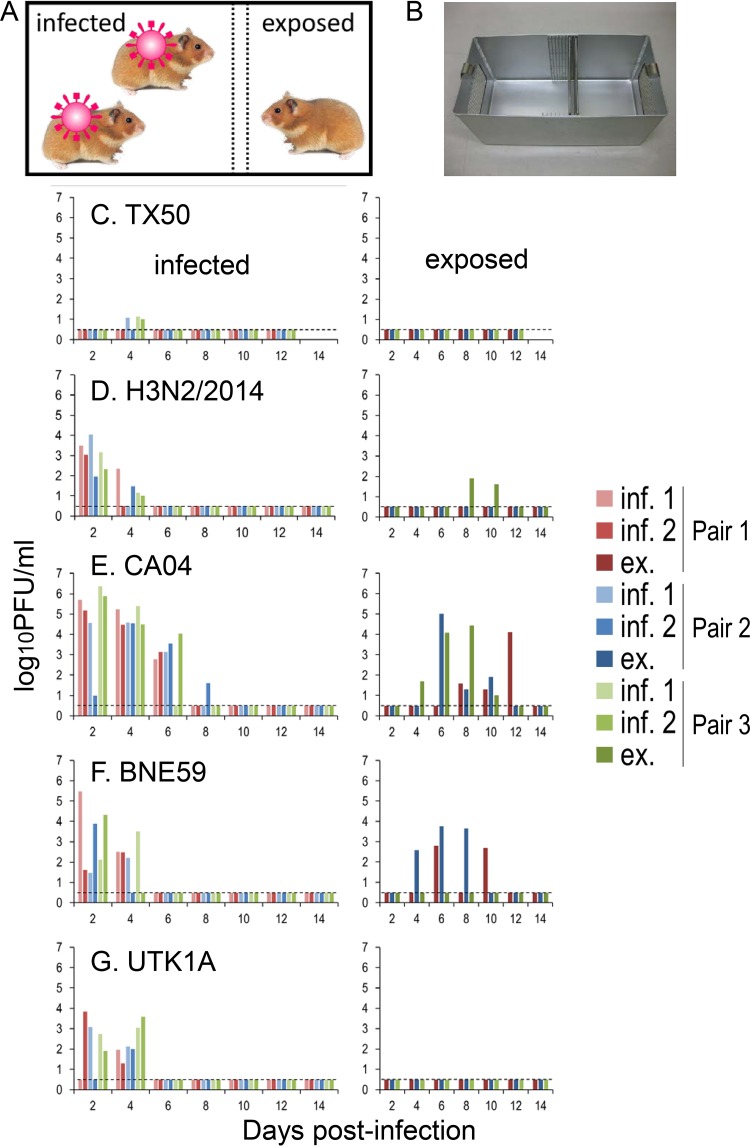FIG 6.
Respiratory droplet transmission of influenza viruses in hamsters. (A, B) Schematic representation (A) and photograph (B) of the transmission cage used for the hamster transmission studies. This cage has two wire-mesh partitions that prevent direct and indirect contact between the animals but allow the spread of influenza virus through the air. (C to G) Three groups of hamsters (two per group) were inoculated intranasally with 106 PFU of TX50 (C), H3N2/2014 (D), CA04 (E), BNE59 (F), or UTK1A (G) virus and then placed in the larger room of a transmission cage (day 0). At 24 h after infection (day 1), one naive exposed hamster per group was placed in the adjacent smaller room (A). Nasal washes were collected every other day from both infected (C to G, left) and exposed (C to G, right) animals for virus titration. Virus titers were determined by using a plaque assay on MDCK cells. The lower limit of detection is indicated by the horizontal dashed lines. inf., infected hamster; ex., exposed hamster.

